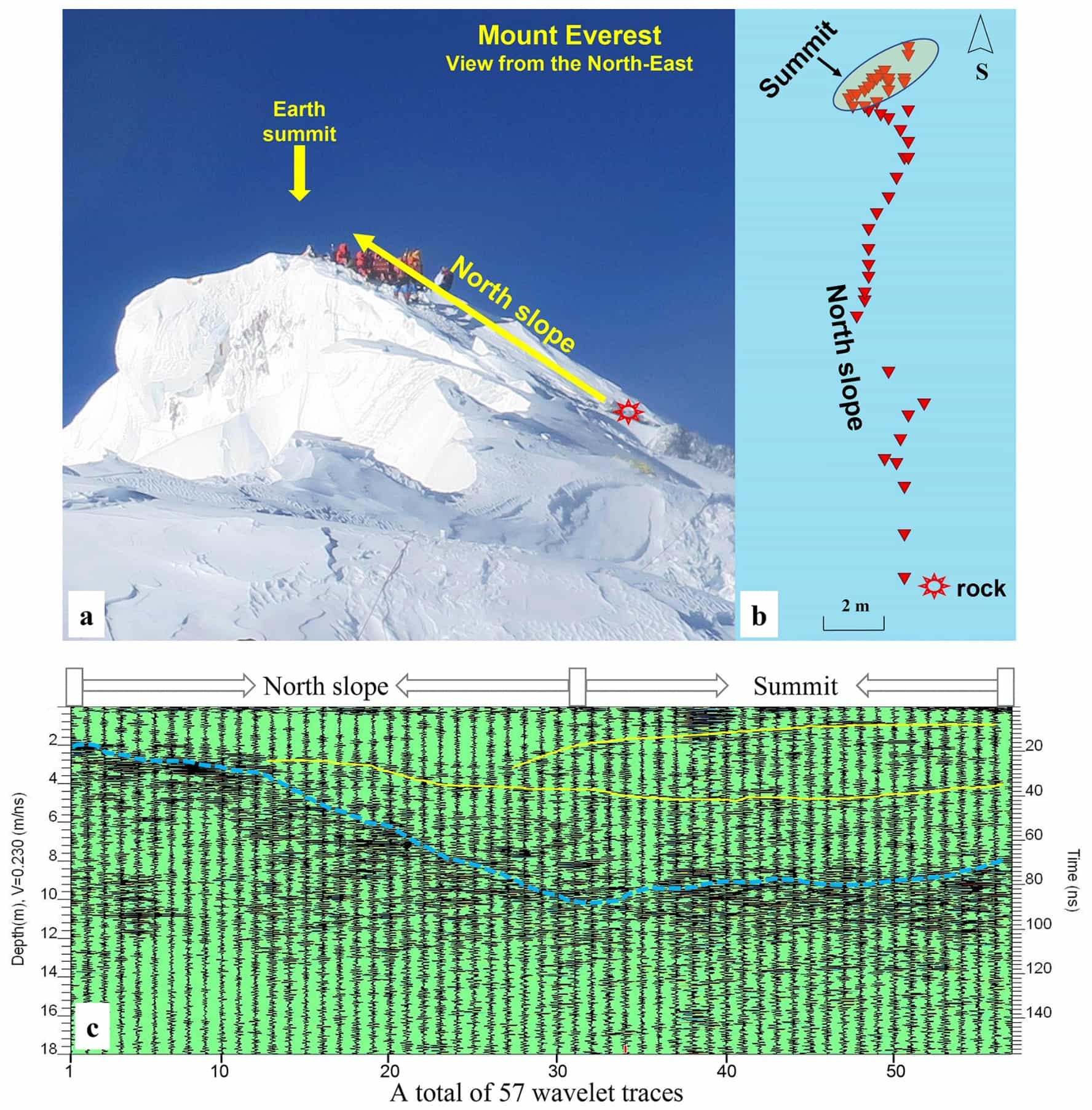
In a recent breakthrough, a team of Chinese scientists has revealed that the snowpack near the summit of Mount Everest is far deeper than previously believed, the Global Times reports. This discovery has significant implications for our understanding of climate on Earth, says the research paper.
Previous estimates of the snow depth on Mount Everest ranged from less than a meter to around 3.5 meters. These estimates were based on relatively basic measurement methods, such as wooden or steel rods. However, the latest expedition by Chinese researchers employed advanced techniques to provide more accurate data.
Using a single transmitter-receiver antenna at a frequency of 1,000 MHz, the team measured the snow depth from the exposed limestone elevation up to the summit. Their findings indicate that Everest’s snowpack is 9.5 meters deep, with a margin of error of 1.2 meters. This measurement is an average derived from 26 measuring points at the summit. It is worth noting that this depth is nearly ten times greater than what scientists believed over 45 years ago and almost three times more than previously known in this century.

Yao Tandong, the leader of the research team and honorary director of the Institute of Tibetan Plateau Research (ITP), CAS, highlighted the significance of this discovery. Not only does it provide a more accurate understanding of the snowpack on Mount Everest, but it also contributes to our knowledge of climate change at extreme altitudes. The findings open up new avenues for research in this field.
This breakthrough has implications beyond the scientific community. Scientists can now use the updated measurement of Everest’s snowpack as a baseline for monitoring climate change. By observing changes in the snow depth over time, we can better understand the pace and rate of climate change at the highest peak on Earth.
Mount Everest is the world’s tallest mountain, standing at a majestic height of 29,032 feet. It is located in the Himalayas, on the border between Nepal and China. Known as Chomolungma in Tibetan, meaning “Goddess Mother of the World,” Everest captivates adventurers and researchers with its awe-inspiring beauty and challenging terrain.
As we delve deeper into our understanding of the snowpack on Everest, we inch closer to unraveling the complex dynamics of climate change and its impact on our planet.
